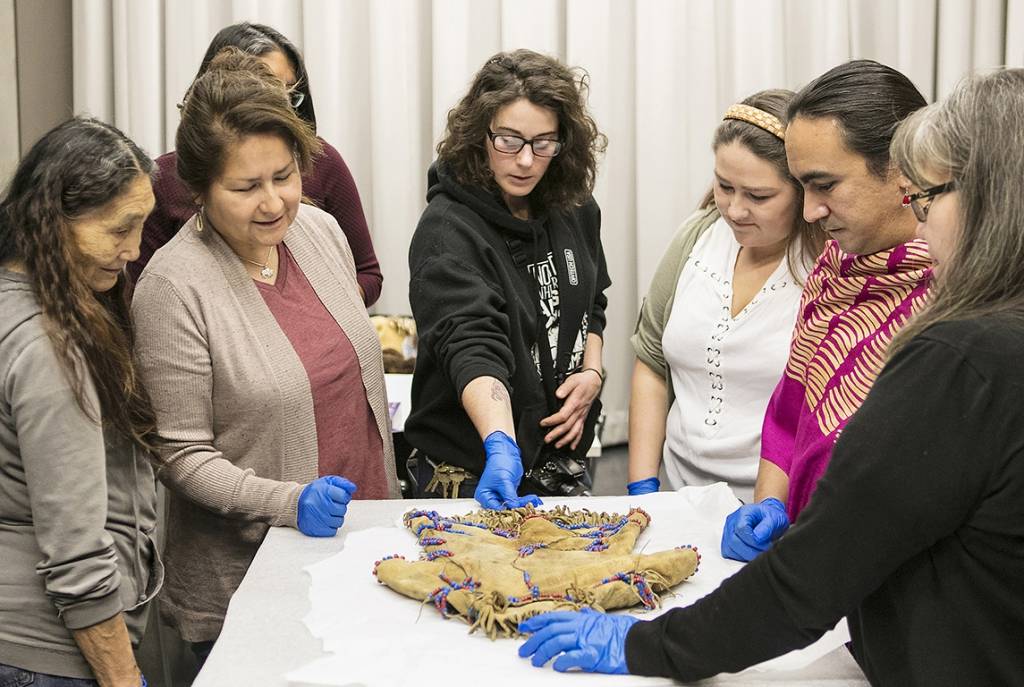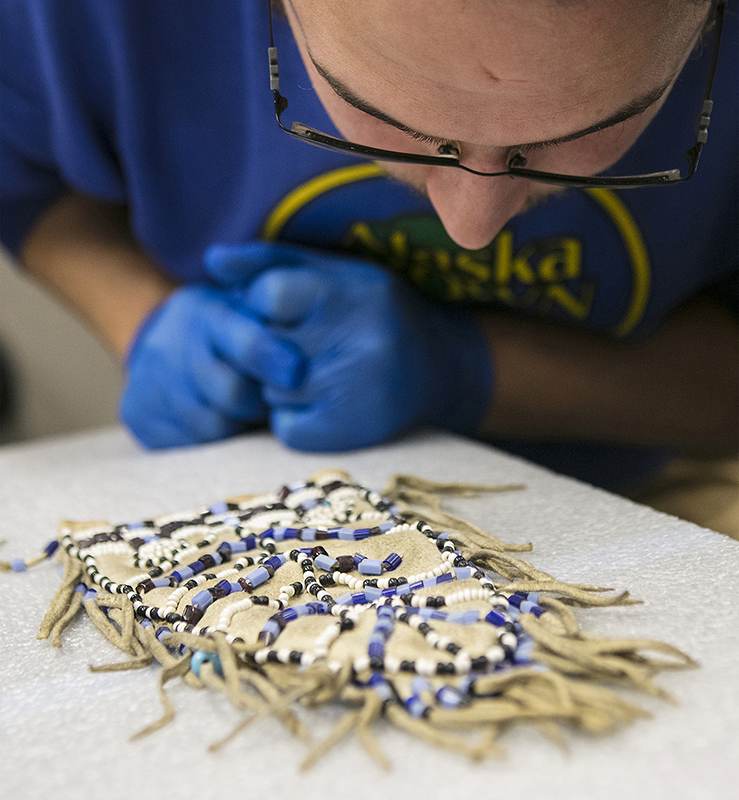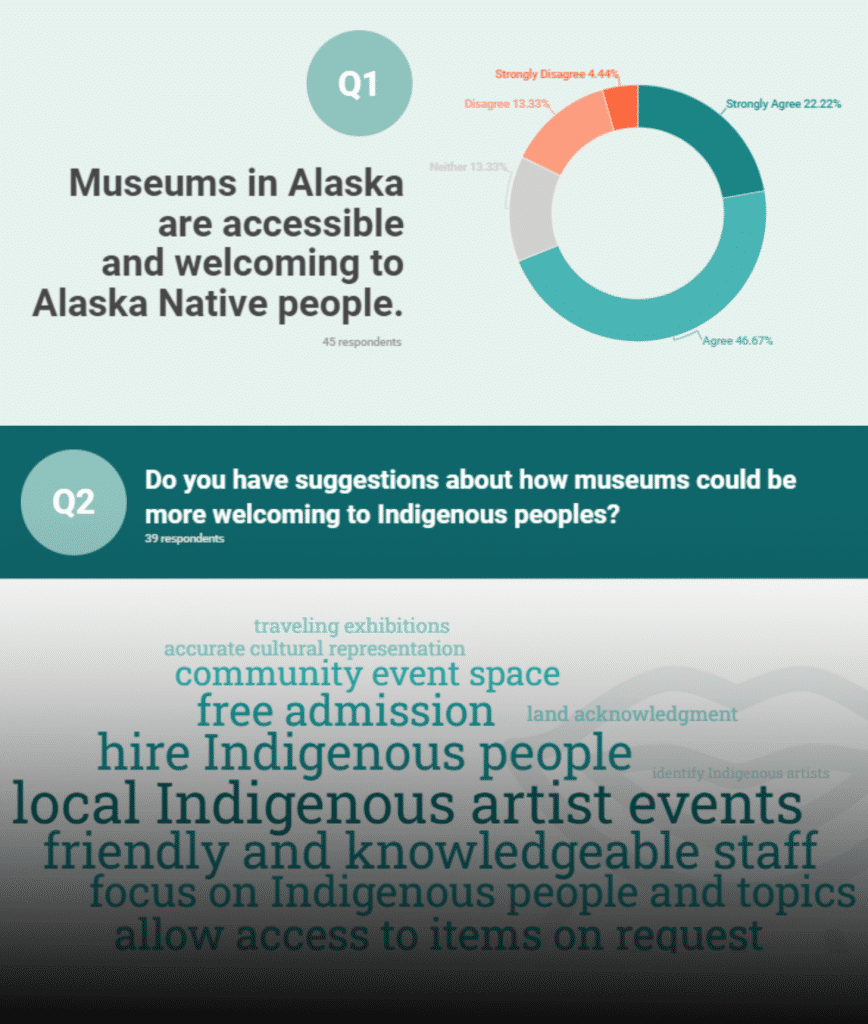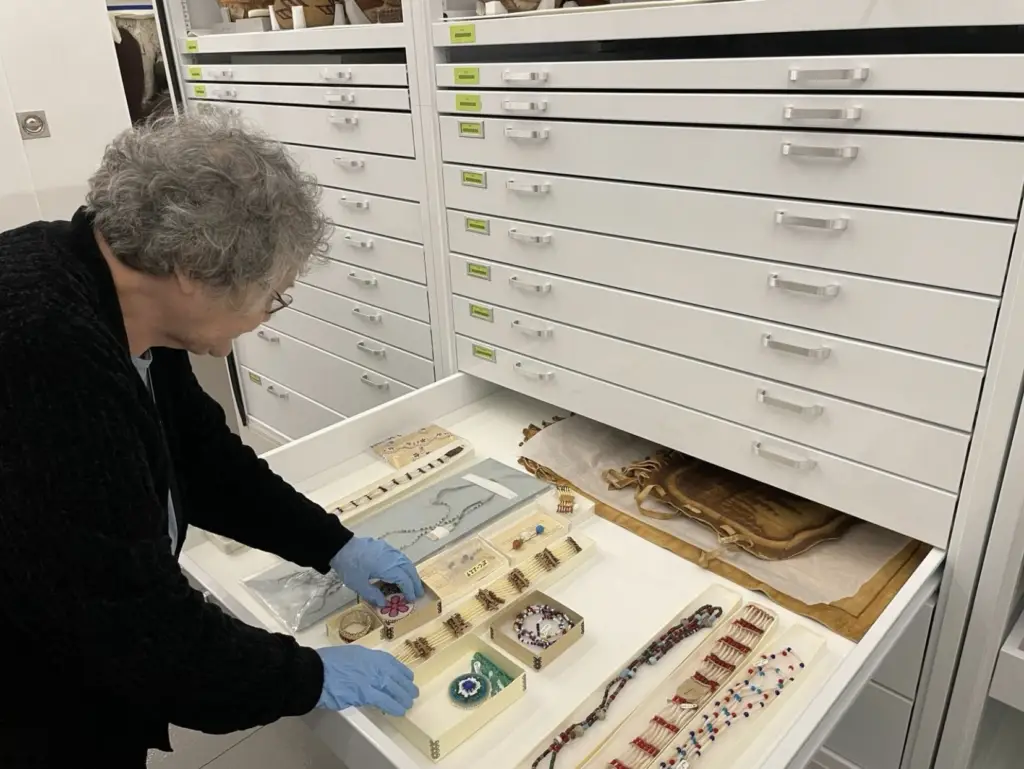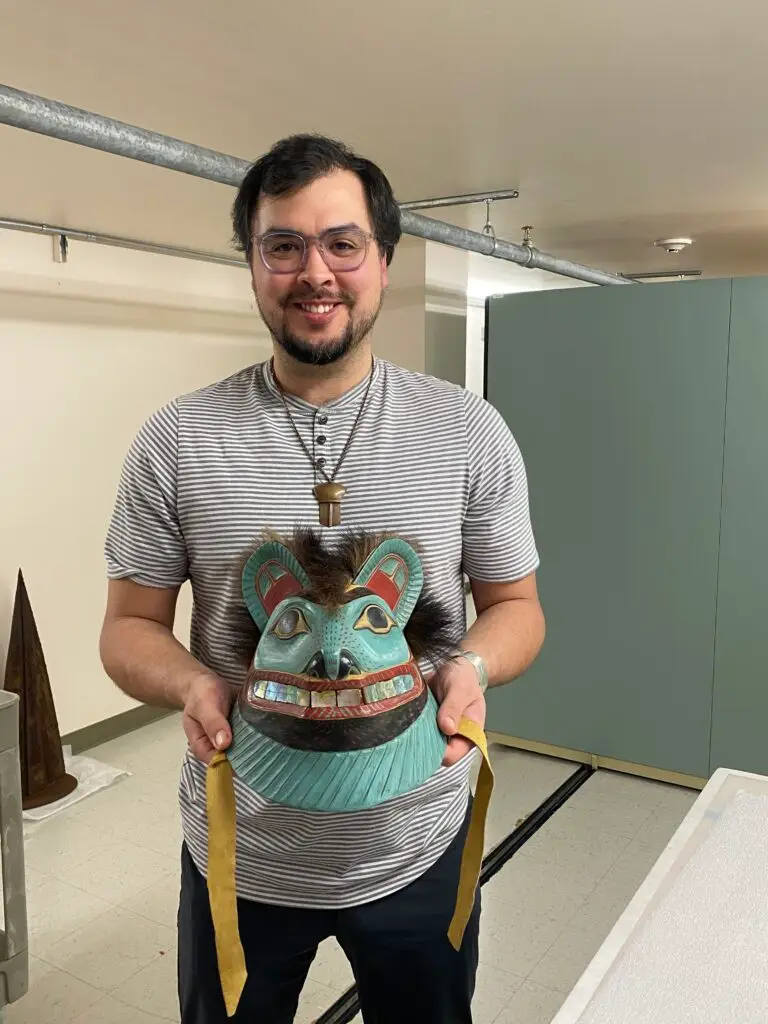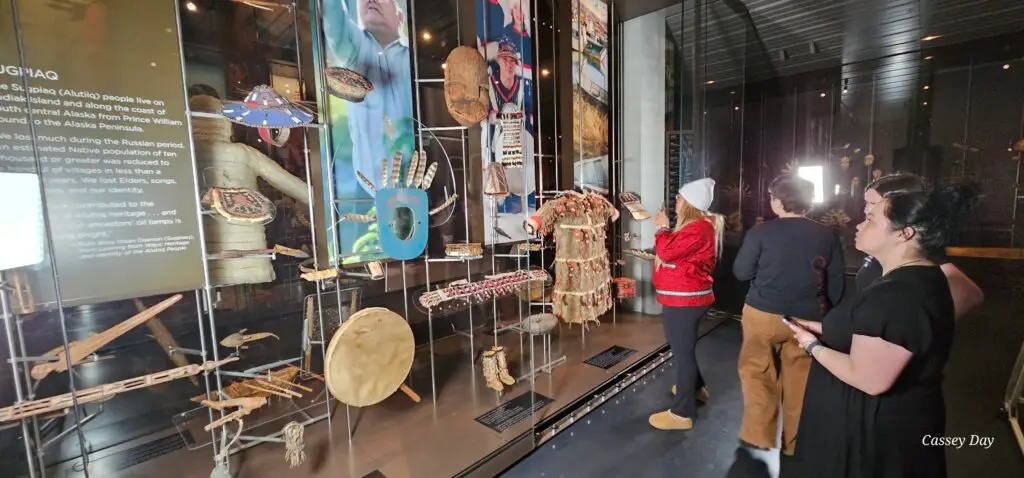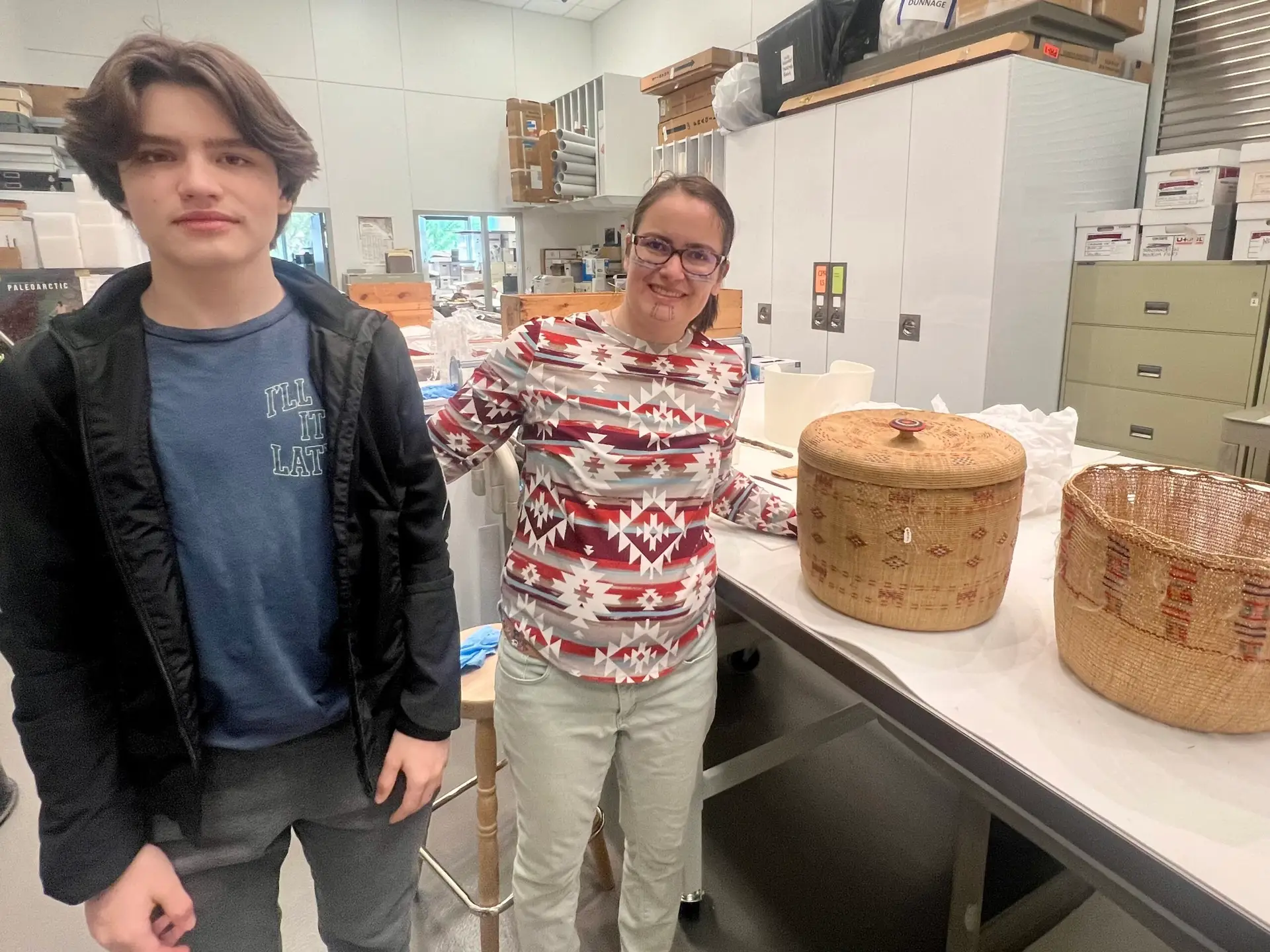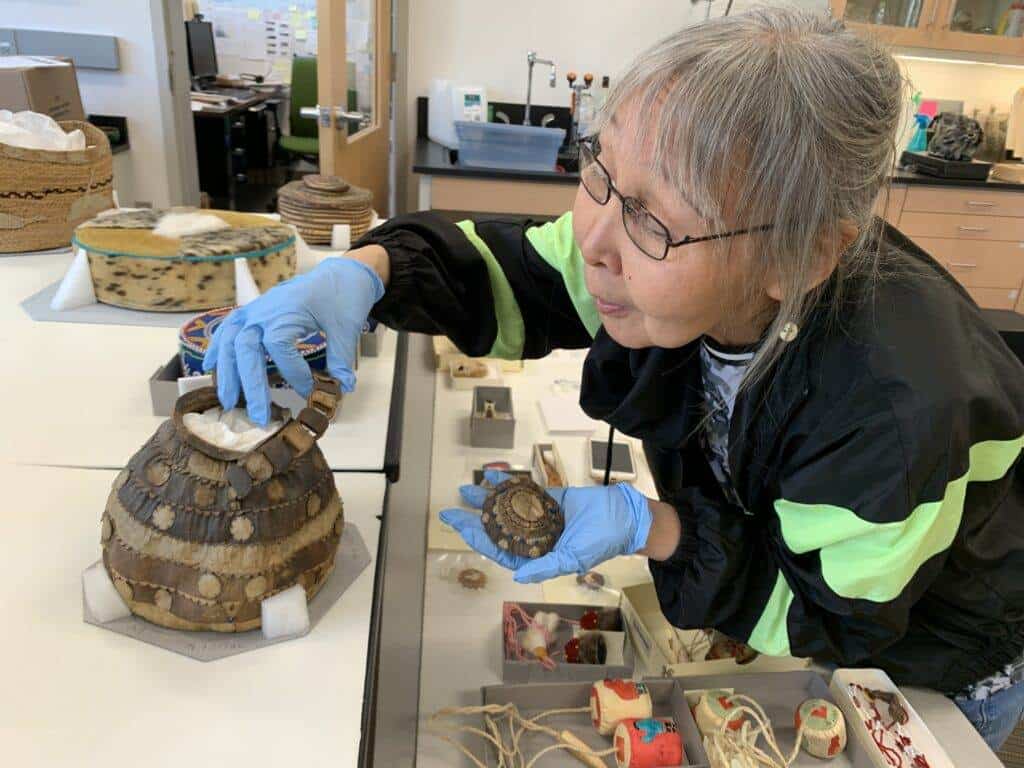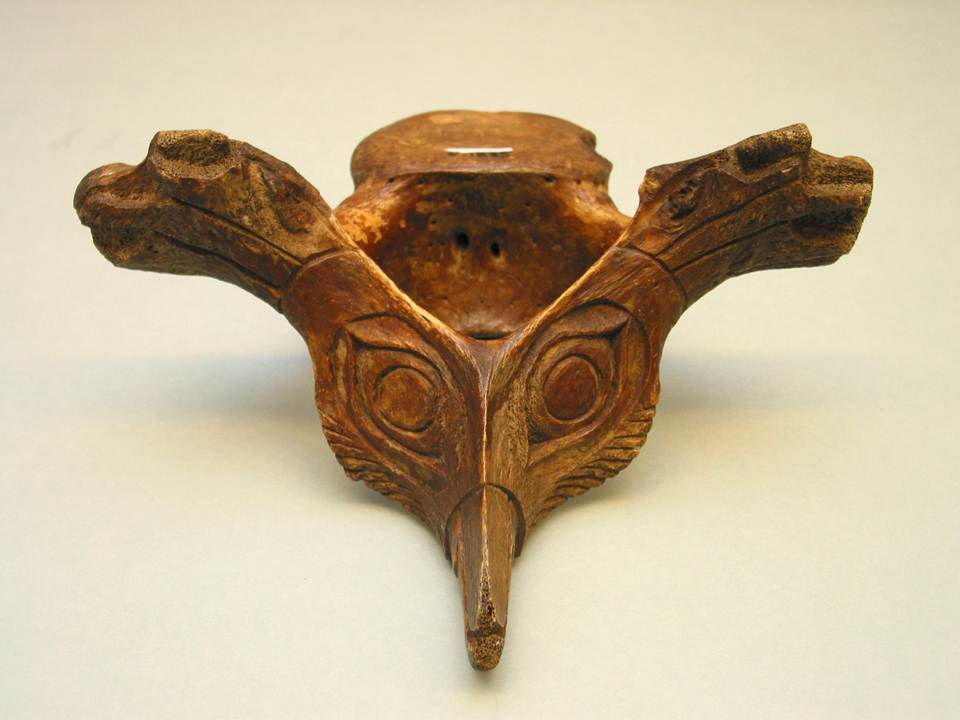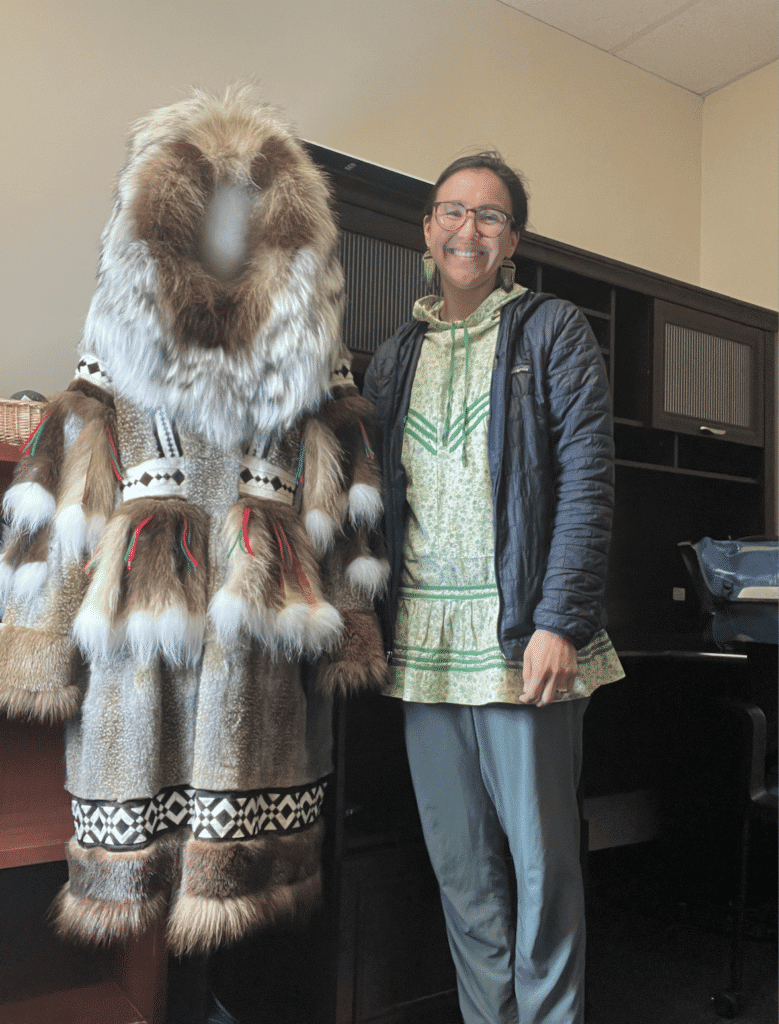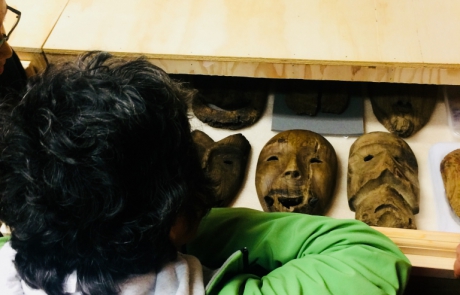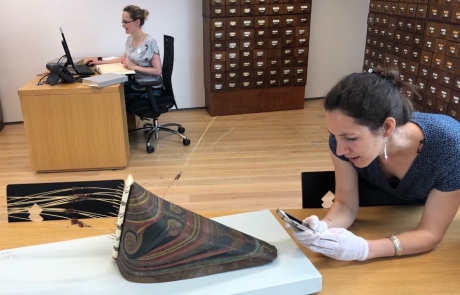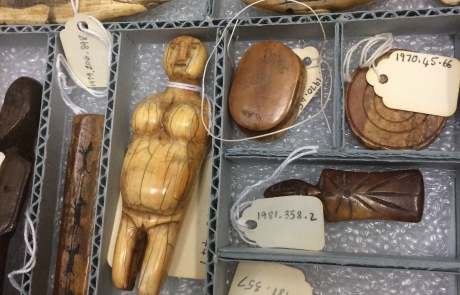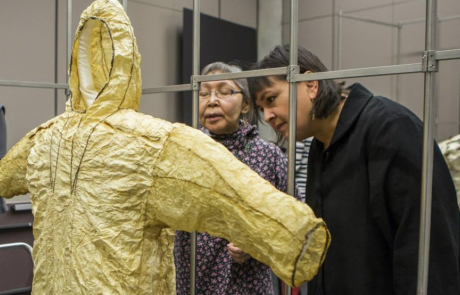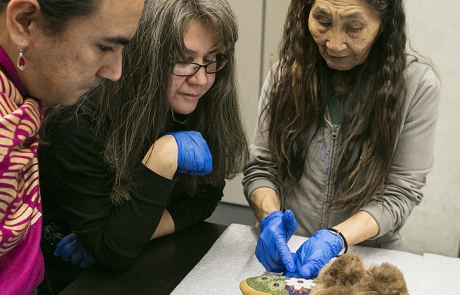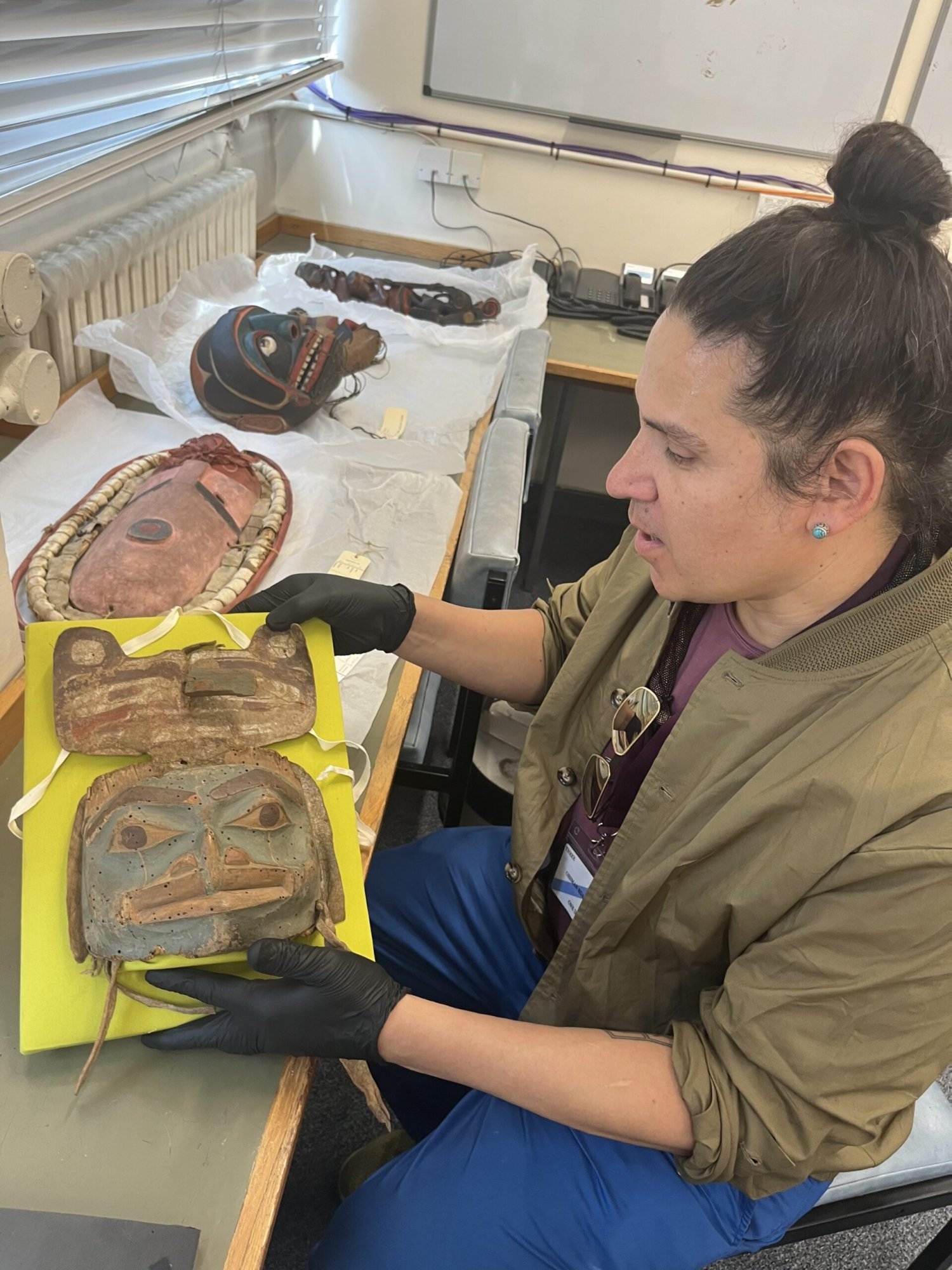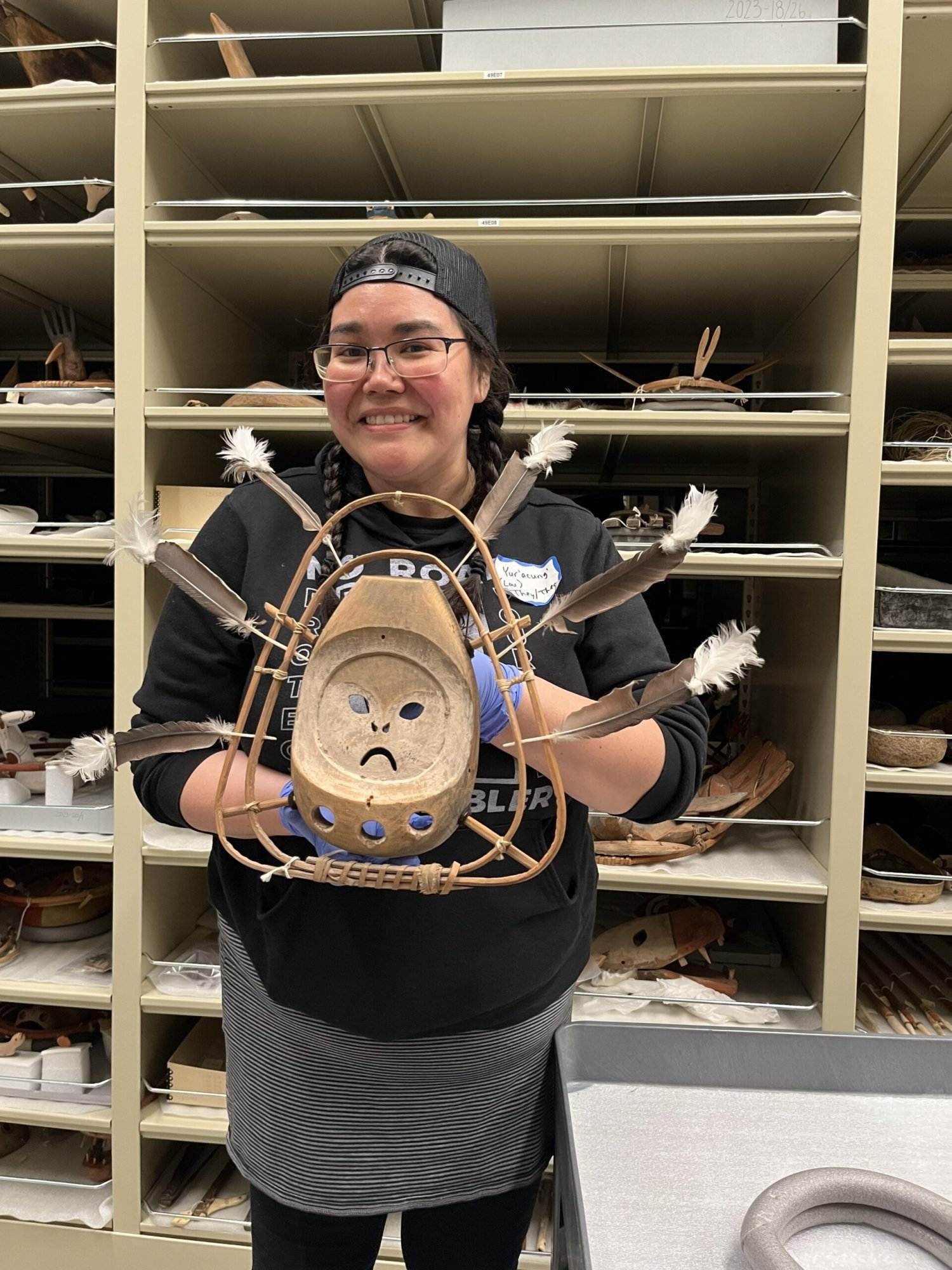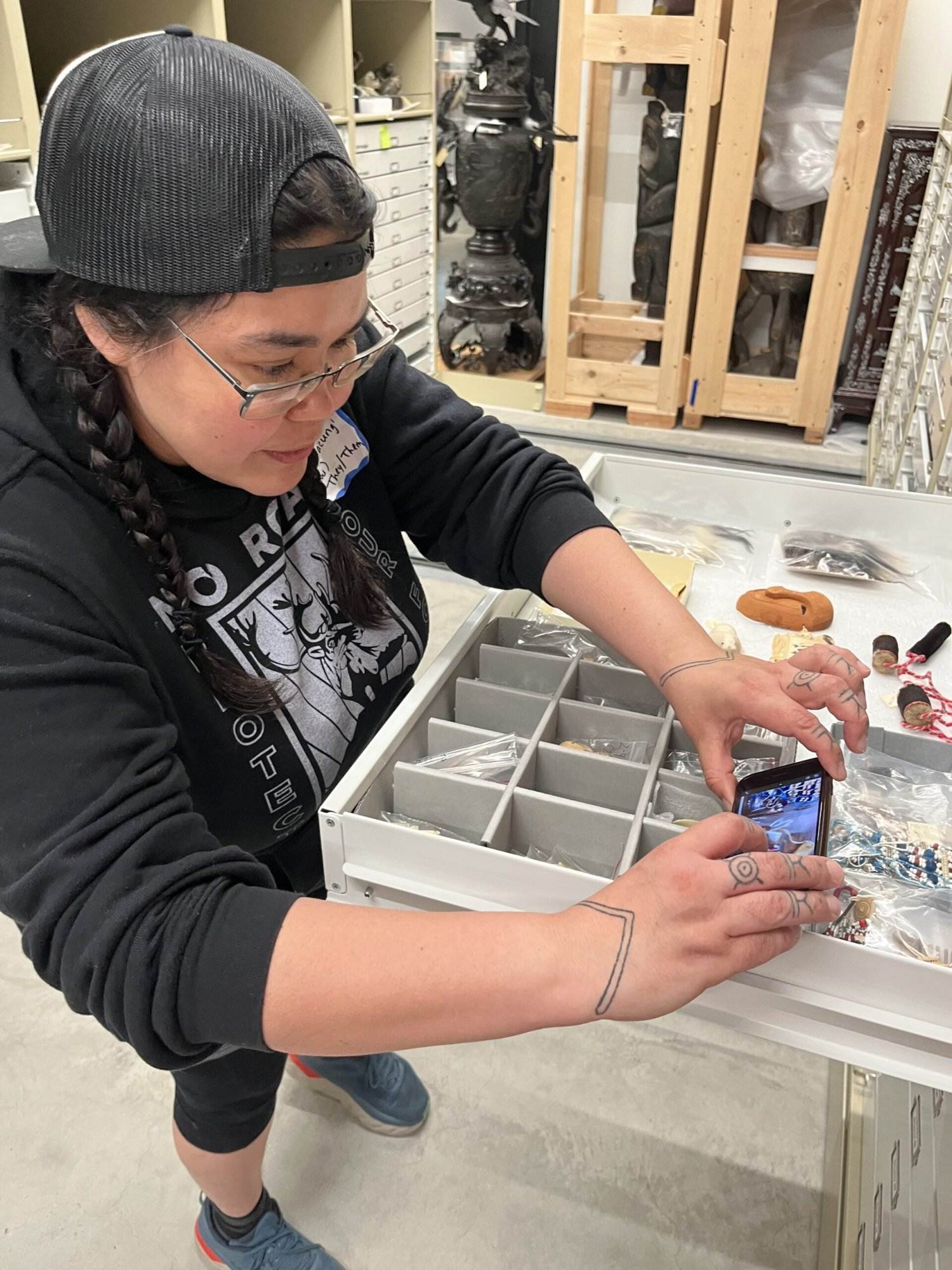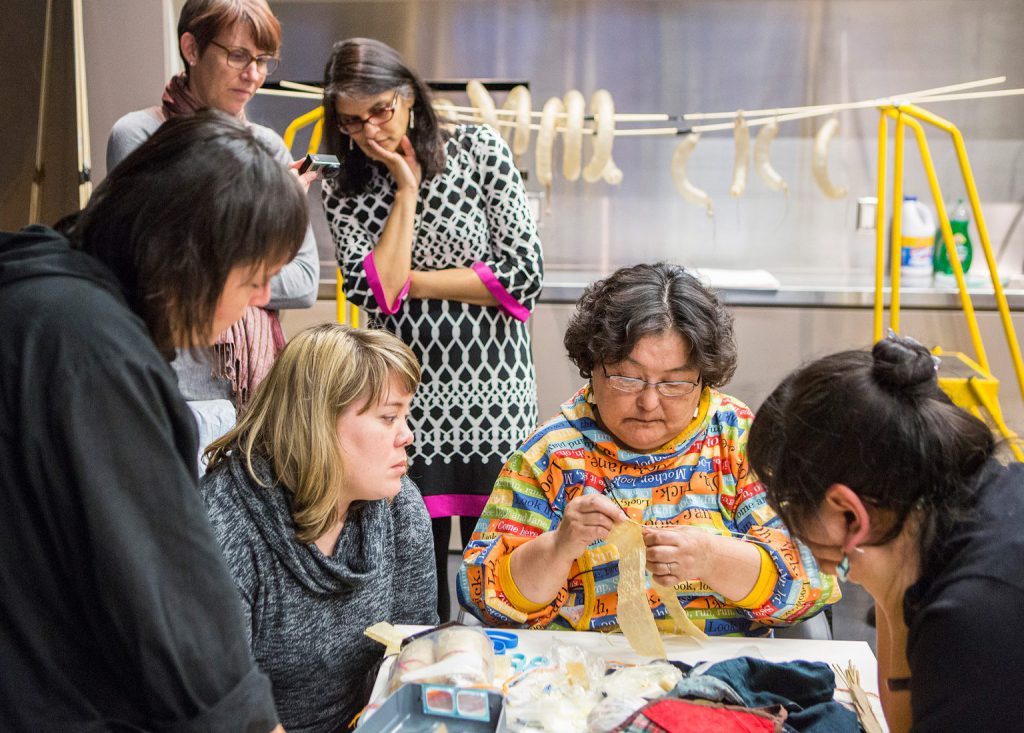Museum Training Programs for
Native Americans/Alaska Natives
The CIRI Foundation has gathered a list of museum training programs for Native Americans/Alaska Natives interested in professional development opportunities in this field. We hope to continue growing this list of programs. If you know of other related programs for Indigenous learners, please let us know.
- Canadian Museum of History’s RBC Indigenous Internship Program
- Institute for American Indian Studies Internship Opportunities (Remote and Traditional)
- Minnesota Historical Society’s Native American Undergraduate Museum Fellowship
- Peabody Essex Museum’s Native American Fellowship Program
- School for Advanced Research’s Ann Ray Internship for Museum Studies
- Smithsonian Institute’s Museum Training Program
- Smithsonian Institute’s Summer Institute in Museum Anthropology
- University of California Berkeley’s Native American Museum Studies Institute: Professional Development Training for Tribal Museum Professionals
- University of Denver’s Ethical Stewardship of Native American Collections Postgraduate Curatorial Training Program

Indigenous Curatorial Fellowship
The CIRI Foundation is pleased to announce a partnership with the Anchorage Museum to support a Museum Sovereignty fellowship program. During this project, fellows will be invited to work with the curatorial and collections department. Fellows will gain hands on experience in museum work, while contributing new ways to add Indigenous perspectives to the museum field. The program will also seek to strengthen relationships between the Museum and Indigenous communities through sharing and collaboration.
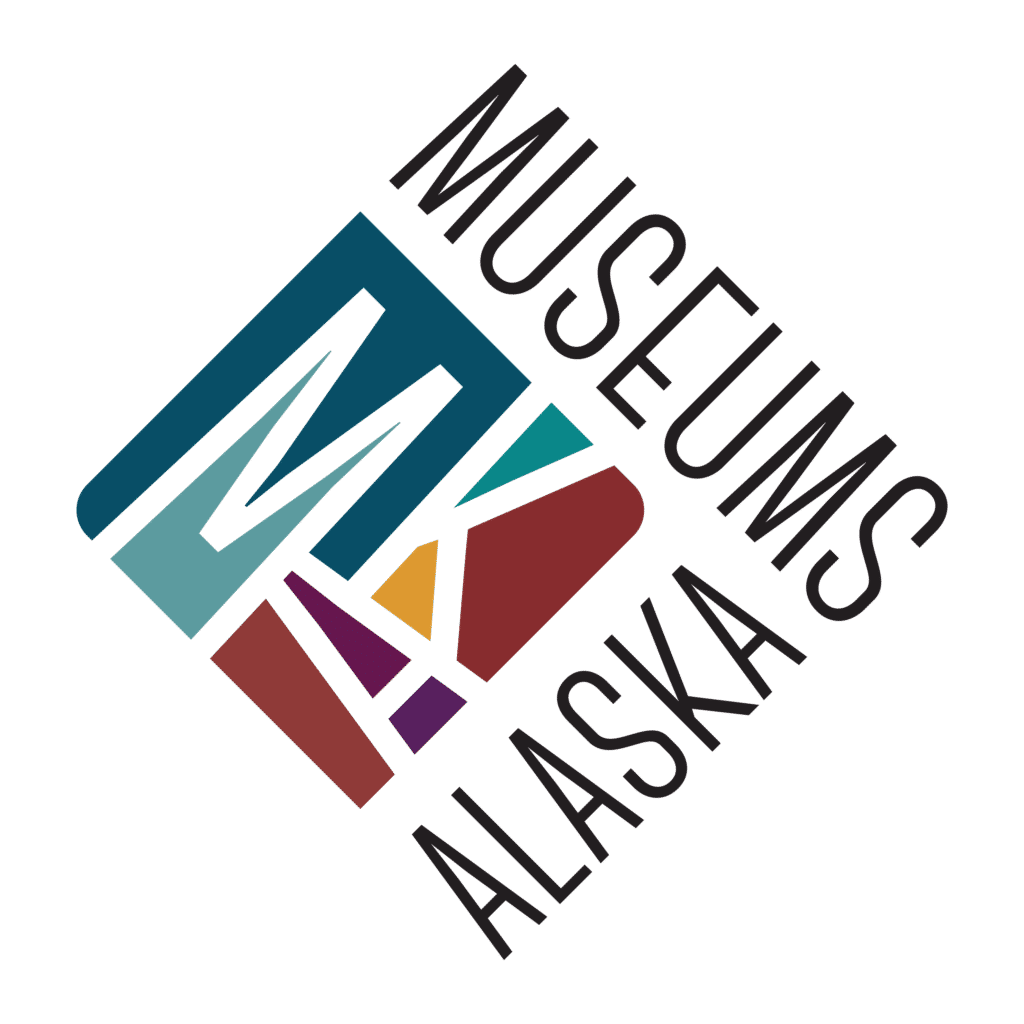
Access to Alaska Native Collections
The CIRI Foundation is pleased to announce a partnership with Museums Alaska to support the Access to Alaska Native Collections project. This program responds to the needs of the Alaska Native artist community for access to Alaska Native collections in museums by supporting research visits to museum collections storage in Alaska.
Please contact Museums Alaska to find out more information about this project.
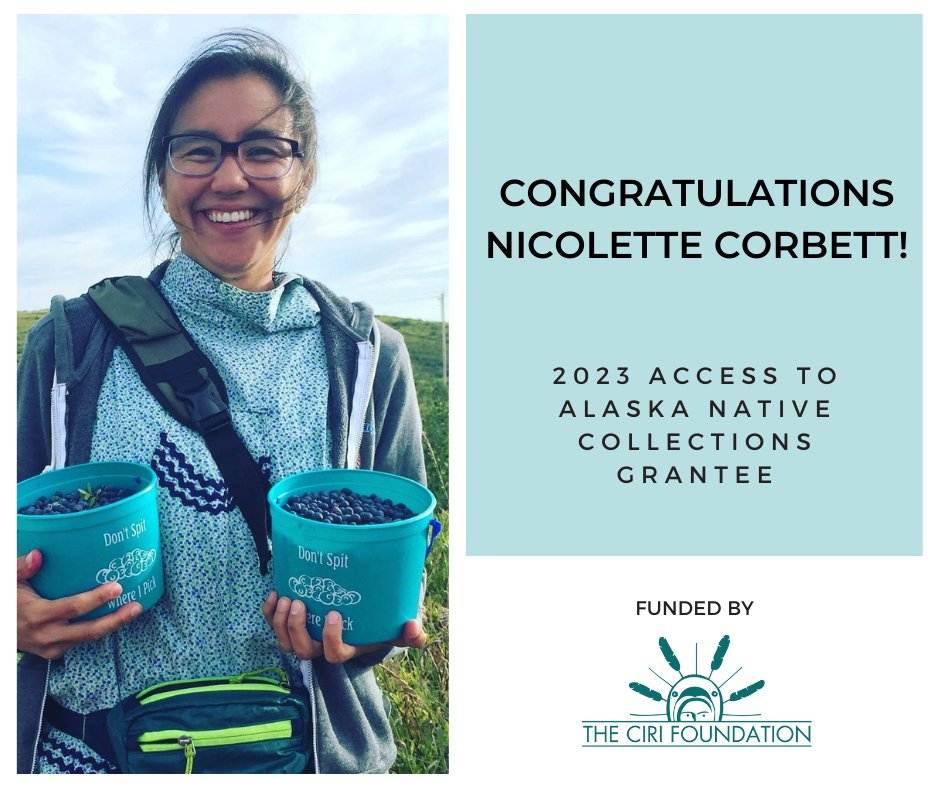
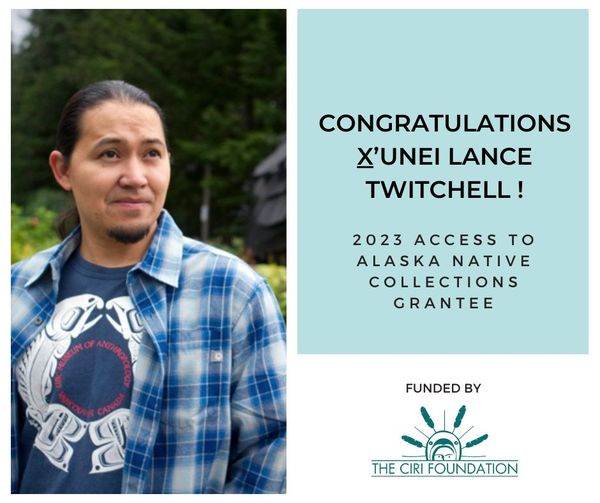
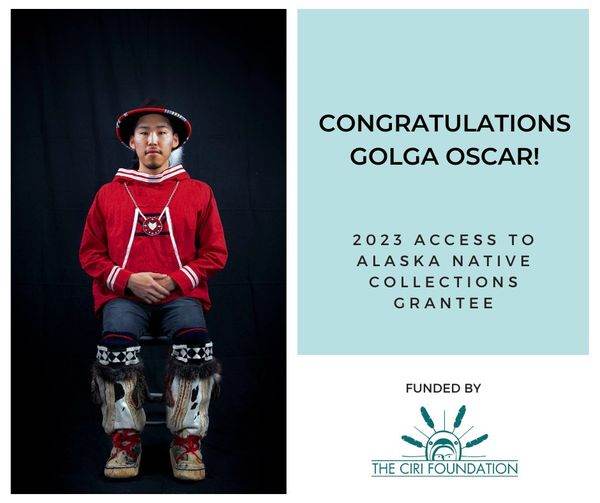
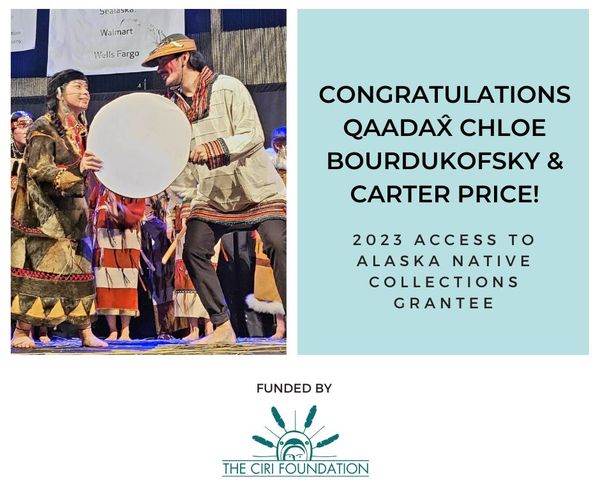

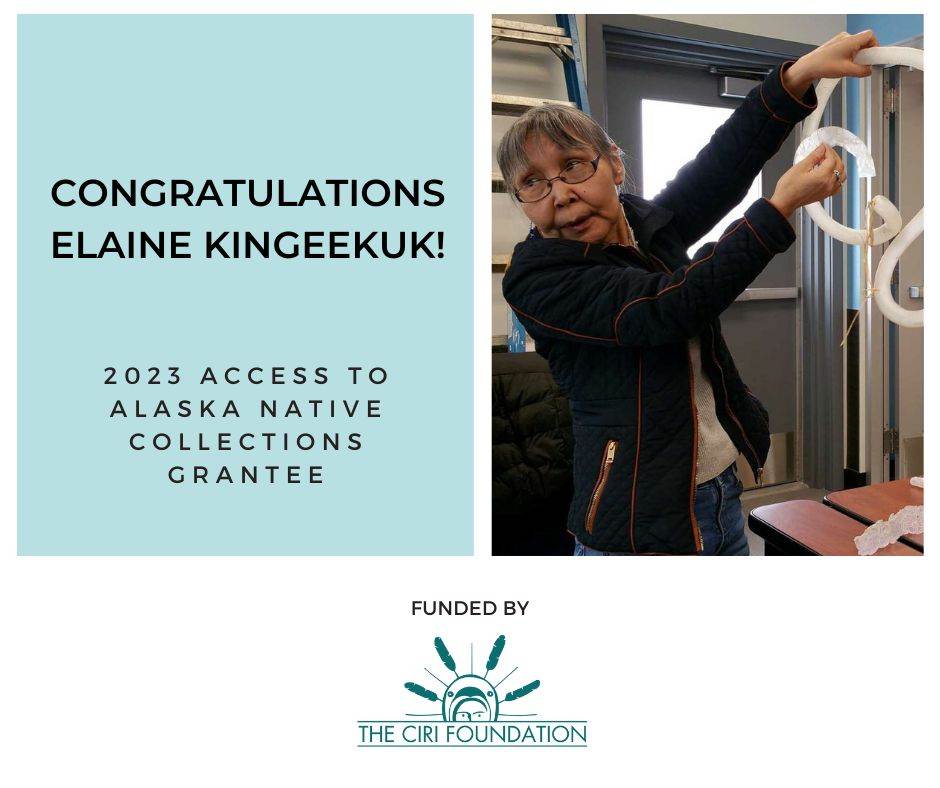
Alaska Native Museum Sovereignty Guide: Case Studies, Experiences & Work Toward Equity with Alaska Native Peoples
The care of Alaska Native cultural belongings in museums is a responsibility that requires deep respect for Indigenous knowledge and traditions. The Alaska Native Museum Sovereignty Guide, developed in partnership with an advisory circle of Alaska Native scholars, artists, and community members, provides museums with essential guidelines on respectfully managing Alaska Native material culture. This resource shares best practices for museums to follow, ensuring that Indigenous cultural practices are honored and museums become more accessible and welcoming to Alaska Native communities.
Museum Sovereignty Advisory Circle:
- Sven Haakanson Jr., Ph.D. (Sugpiaq), Professor of Anthropology and Curator of North American Anthropology, University of Washington
- Aaron Leggett (Dena’ina), President, Native Village of Eklutna, Senior Curator, Alaska History & Indigenous cultures, Anchorage Museum
- Tanya Lukin-Linklater (Alutiiq), Artist and Doctoral Candidate at Queens University
- Judith Dax̱ootsú Ramos (Tlingit, Kwaashk’í kwáan clan from Yakutat), Assistant Professor, University of Alaska Fairbanks
- Melissa Shaginoff (Ahtna & Paiute), Independent Artist & Curator
- Haliehana Alaĝum Ayagaa Stepetin (Unangax̂), Ph.D. Candidate in Native American Studies, UC Davis
- Erin Gingrich (Koyukon Athabascan and Iñupiaq), Artist
- Sonya Kelliher-Combs (Koyukon Athabascan and Iñupiaq), Artist
- Nadia Sethi (Alutiiq), PhD, Art Historian and Journey to What Matters Program Director, The CIRI Foundation
Tips for Visiting and Researching Museum Collections
Did you know museums can sometimes provide access to collections beyond what is available to see within a museum exhibition or gallery? A visit to a museum’s collections storage area can be a rewarding experience and having access to collections of Indigenous heritage materials is your right. This document is intended to provide tips for visiting and researching museum collections for Alaska Native community members.
- Research what you want to see ahead of time.Many museums have an online catalog of collections where you can search collections by culture group or region. Find out if the museum you plan to visit has an on-line catalog available to begin your research. When searching a museum’s on-line database, you may find that museum collections are sometimes misattributed or lacking information. If you find errors in collections records, share your findings with museum staff so that corrections can be made. In some cases, museums do not have a collections database that is accessible to the public. If this is the case, you can reach out to the museum to ask for additional information about what is contained within collections. You may also ask for digital copies of collections records and photographs. Examples of searchable museum collections databases are the Cambridge Museum of Archaeology and Anthropology and the Smithsonian National Museum of Natural History.
- Connect with museum staff: Prior to organizing a visit to a museum, you may want to contact the museum to introduce yourself. If you are hoping to access collections that are not on display, you should plan to let the museum know when you would like to visit, who will accompany you, and the goals of your research. The museum may be able to assist you with organizing a visit and accessing collections and collections’ records. Some museums have staff dedicated to helping provide access and may be accustomed to working with Indigenous people. If you are able to provide details about what you would like to examine in the collections prior to your visit, this will help give museum staff time to plan for your visit and pull items for viewing if needed (be aware that some materials may be stored off site and may not be accessible at the museum’s primary site). If there are materials that you do not want to encounter during your visit (such as human remains or associated funerary materials, or shamanic materials), share your concerns with museum staff. Note that some museums may require planning for a collection visit a few months in advance. Some museums may not be well equipped to accommodate special access for visitors to collections area, but it is always a good idea to ask.
- Museum policies and rules: Each museum has unique guidelines and policies about visiting collections. Find out what is required for the specific museum that you would like to visit. Note that food and beverages are typically not allowed in collections spaces to keep the space clean and to prevent pests. Museums may require museum staff to be present during your collections visit for safety reasons.
- Handling collections: Some museums may allow you to handle material with or without gloves, while other museums may not allow materials to be physically handled, or will require that you to wear gloves if handling collections. In some cases, wearing gloves may be required for your own protection, as collections may have been treated with pesticides such as arsenic, led or mercury. Wearing gloves will also help to keep collections clean and well preserved for future generations.
- Documenting your visit: Bring materials to help record your research such as a notebook and a camera. Be sure to keep track of the museum catalog numbers so that you have them available for future reference. When examining an object, you may want to consider the following: What materials are used? What techniques were used to create it? How does the piece relate to other objects, or stories?
- Museum Environment: Museums tend to be climate-controlled spaces (temperature, humidity, light and filtered air). Plan to dress appropriately so that you will be comfortable in this environment.
- Taking care: Visiting with ancestral objects can be a very rewarding experience. Give yourself plenty of time for your visit to appreciate your time. Once your visit is complete, consider sharing what you have learned with others.
If you would like assistance with organizing a museum visit, the Museum Sovereignty program may be able to help.
This page is inspired by and adapted from the School of Advanced Research’s guidelines for collaboration.
A Journey to What Matters Program Director Nadia Jackinsky-Sethi shares what the Alaska Native Museum Sovereignty initiative means in this article for the Arctic Arts Summit.

